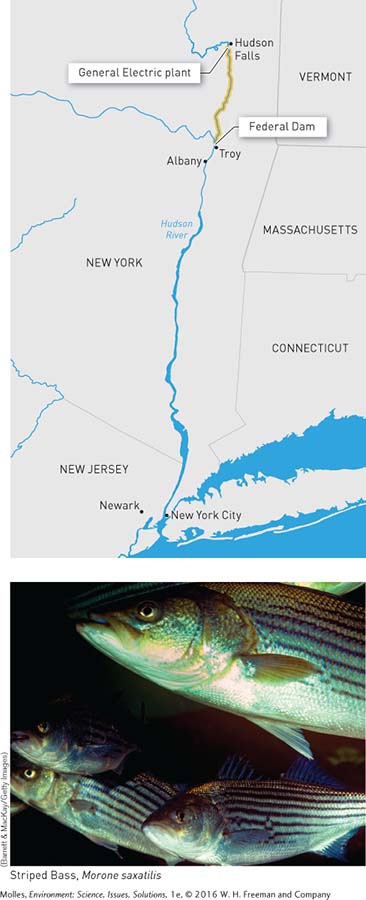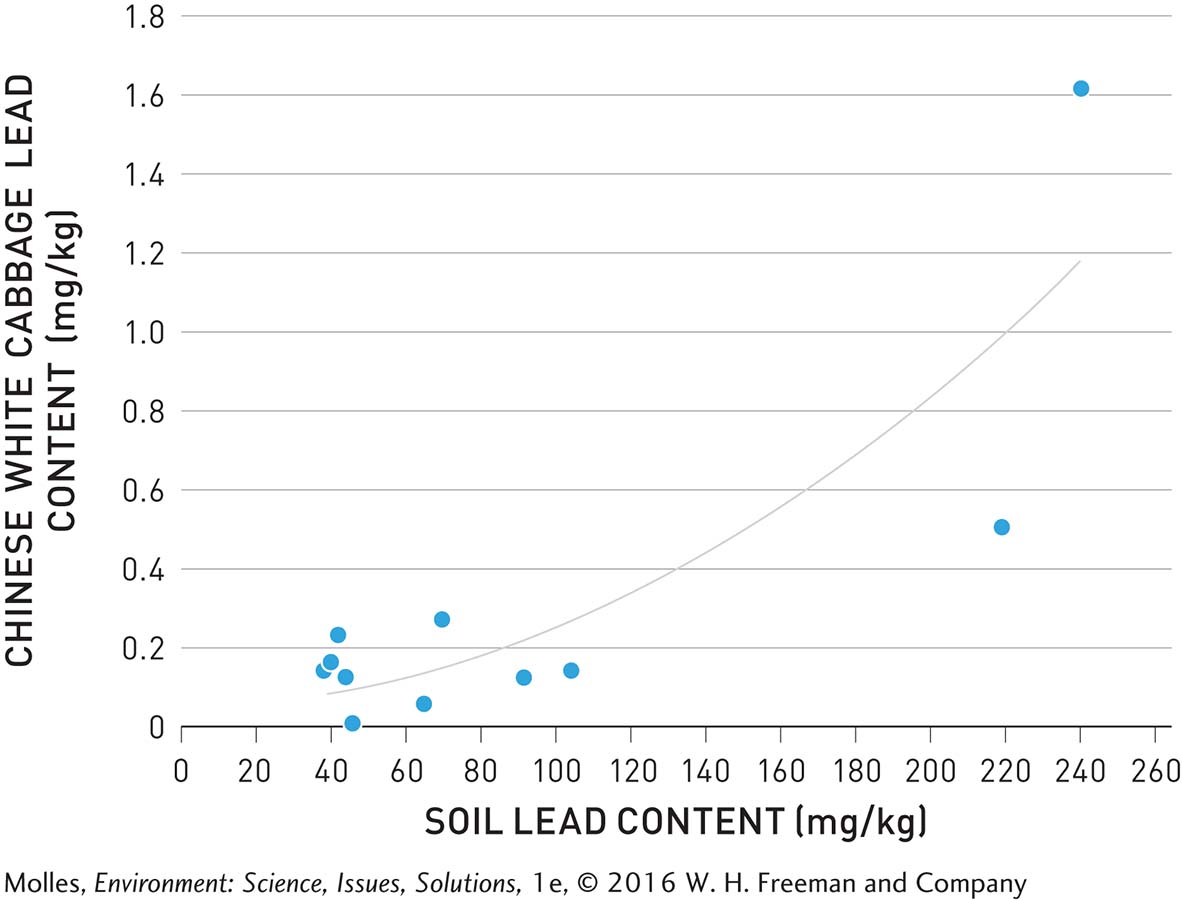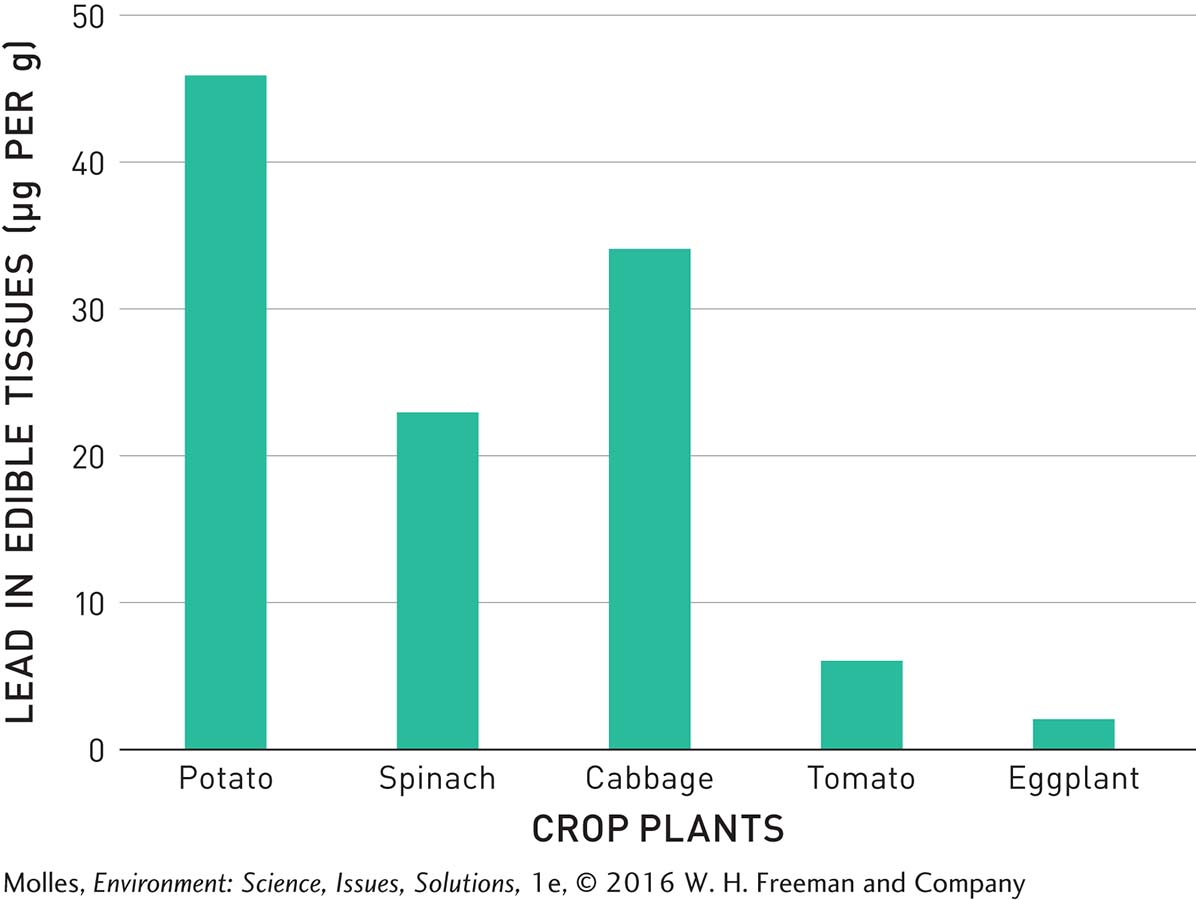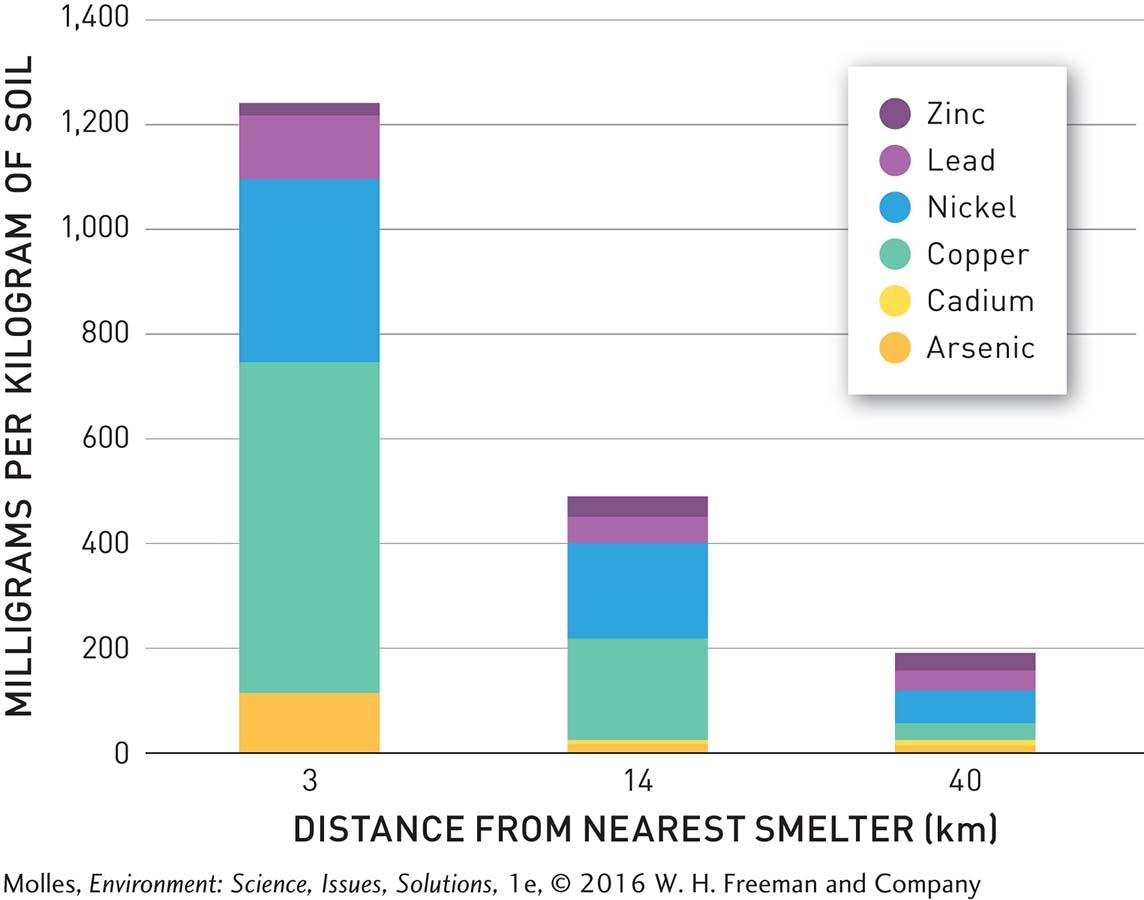13.6 Persistent pollutants enter the human food chain
Persistent pollutants can cause environmental problems years or even decades down the line. Even after we have recognized the threat of certain chemicals and begin to control their use, we are still dealing with their fallout.
PCBs and Hudson River Fish
Polychlorinated biphenyls, or PCBs, are a persistent pollutant that has been linked to various cancers, lower sperm counts, and learning disabilities. Before being banned in 1979, approximately 675 million kilograms (1.5 billion pounds) of PCBs were used in the manufacture of a variety of products from microscope oils to refrigerators. They were dispersed from urban settings to the high Arctic, and the most notorious case of PCB contamination comes from New York State.
Over the three decades from 1947 to 1977, a General Electric manufacturing plant released 585,000 kilograms (1.3 million pounds) of PCBs into the Hudson River at Hudson Falls, approximately 320 kilometers (200 miles) upstream of New York City. By the 1970s, fish in the river were so toxic they were deemed unsafe for human consumption. In 1976 New York’s Department of Health advised women of child-

How might the precautionary principle play a role in preventing the release of hazardous POPs into the environment?

Following their ban in 1979, General Electric stopped discharging PCBs into the Hudson River and levels of PCB concentration began to decline in the river’s fish. However, concentrations remained above safe levels as PCBs continued to ooze from the riverbed sediments into the food web. Then in 1983 the EPA declared the 320 kilometers of the Hudson River above New York Harbor a Superfund site. In 1985 the coastal areas off western Long Island and New York Harbor were closed to commercial fishing for striped bass, Morone saxatilis (see Figure 13.22), a commercially important fish in the region. In the face of legal challenges by GE, it was more than two decades before steps to clean up the sediments in the Hudson River began in earnest in 2009. The full human and economic costs of this single episode of pollution are still being calculated.
Heavy Metals and Agriculture
Mining, metal working, and especially combustion of coal all transfer heavy metals from deep geologic formations to the surface biosphere, where they can cause long-


Why is the problem of heavy metal contamination one that will not soon go away?
Similar studies done elsewhere in the world, from the United States to India, have shown that vegetables grown on contaminated soils will accumulate heavy metals in their tissues. Leafy green vegetables, such as spinach and cabbage, and some root crops are particularly apt to accumulate higher levels of heavy metals in the edible parts of the plant, compared with the fruits of crops such as tomatoes, peppers, and eggplant (Figure 13.24). Over the long term, heavy metals can build up in soils to the point that they are no longer safe for agricultural production.

In Sudbury, Ontario, researchers have studied how heavy metals harm the native flora and fauna. Heavy metals are highest in soils at 3 kilometers from the nearest smelter in the vicinity of Sudbury, with a progressive decline in concentrations at distances of 14 to 40 kilometers (Figure 13.25). The researchers wondered how organisms would fare when raised in these areas. They found that northern wheatgrass, Elymus lanceolatus, developed nearly 10 times less mass when grown near the smelter than when grown 40 kilometers away (Figure 13.26). In addition, red earthworms, Eisenia andrei, which aerate and mix the soil, survived when they grew near the smelter, but they failed to reproduce.


Think About It
What factors make soil contamination by heavy metals a serious concern?
Page 407What can be done to pursue economic development without impairing the capacity of soils to produce healthy food?
How might the release of heavy metals into the environment be factored into the costs of using coal as an energy source?